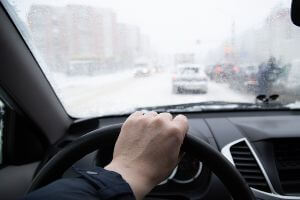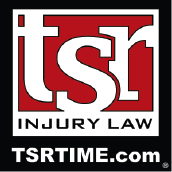Liability for Car Crashes That Happen in Low Visibility Conditions
 Winter weather can make it harder for drivers to see the vehicles around them. This means drivers may have much less time to slow down or change lanes to avoid a collision with another vehicle or fixed object. That is why drivers have an obligation to take extra precautions to avoid crashes in these conditions.
Winter weather can make it harder for drivers to see the vehicles around them. This means drivers may have much less time to slow down or change lanes to avoid a collision with another vehicle or fixed object. That is why drivers have an obligation to take extra precautions to avoid crashes in these conditions.
If drivers do not take extra precautions in low visibility conditions, they could be held liable for damages if a crash occurs. That said, determining liability for these crashes can be a challenge. The drivers involved may not know much about what happened because the weather conditions made it harder for them to see.
Victims of collisions in low visibility conditions should consider talking to an experienced Minneapolis auto accident attorney about possible legal options. At our firm, the initial legal consultation is free of charge, and there are no upfront fees before taking your case.
TSR Injury Law is ready to assist you. Call us today: (612) TSR-TIME.
Weather Conditions That May Impair Drivers’ Visibility
There are a variety of weather conditions that can make it harder for drivers to see, such as:
- Heavy snow/blizzard conditions
- Fog
- Rainstorms
- Sleet
- Hail
Driving in these conditions is much more dangerous at night, as it is going to be even harder to see through snow or precipitation without daylight to help you. Some roads have fewer streetlights than others, and some have no streetlights at all. When you combine poor/low lighting with bad weather conditions, a crash may be much more likely to occur.
In the summertime, glare from the sun can also impair visibility. This is more likely to happen when the sun is rising or setting, and you are driving toward the rising or setting sun.
Other Conditions That Can Obstruct Visibility
Weather is not the only thing that can make it harder to see around your vehicle when you are driving. For example, if you are trying to turn left across two lanes of traffic but there is a hill in front of you, it may be impossible to see oncoming cars.
Road construction could also impair drivers’ visibility. Some lanes may be blocked off and it can be difficult to follow the directions from construction workers or signs. This is why it is important to slow down in construction zones, so you have enough time to avoid a collision.
When turning out of a parking lot or shopping center, there may be trees, bushes and other landscaping obscuring your view of the road. For instance, a long line of bushes could limit how far you can see to your left when you are waiting to make a right turn.
How Impaired Visibility Can Make It Harder to Assess Fault
Many car crash cases boil down to the two drivers’ accounts of the incident. In a third-party liability insurance claim, the victim is going to need to prove the other driver’s negligence caused the collision and resulting injuries.
However, proving what happened can be challenging because both drivers may have had impaired visibility. They may also have limited information about what occurred.
Liability for Low Visibility Crashes
One of the key questions after a crash in low visibility conditions is whether the other driver took extra precautions to avoid a collision. For example, even if the other driver was obeying the speed limit, he or she may have been negligent because it may have been necessary to drive below the speed limit.
It is also reasonable to expect drivers who are in impaired visibility conditions to leave more space in front of their vehicles to avoid a rear-end collision.
Even if it is daytime, drivers may have an obligation to drive with their lights on when there is bad weather that impairs visibility. Failure to do so could cause a driver to be held liable for damages from a crash.
Sometimes a crash occurs because drivers did not properly maintain their vehicles. Their windshield wipers may have been too old to properly clear the rain or snow away. This can make a crash much more likely to occur, particularly when the weather is already impairing visibility.
Old tires are more likely to lose traction in bad weather. If this happens, the driver of that vehicle is likely to be held liable for a collision. This is because drivers are responsible for properly maintaining their cars.
Drivers have no control over the weather, but they cannot blame the weather for a crash.
What if There was Bad Lighting?
If the crash happened on a dark roadway with few or no streetlights, it may be possible to hold a government entity liable for maintaining a dangerous road. However, the question may also be whether the driver could have done more to avoid the collision. For example, if the driver had turned on his bright headlights, the crash may have been avoided.
Victims of collisions in low visibility conditions should consider seeking help from an experienced lawyer. At TSR Injury Law, we have the experience and resources to investigate these crashes and build strong cases. Like you, our goal is to secure full compensation for your damages.
Call TSR Injury Law After a Vehicle Crash
If you need insurance compensation after a crash, talking to an experienced lawyer can be an important step. Insurance companies are trying to find some way to deny your claim or offer a reduced amount of compensation to make you go away.
We have been taking on insurance companies for many years and we have helped many crash victims obtain the compensation they need.
Licensed Attorneys. No upfront fees. Contact us at (612) TSR-TIME.



